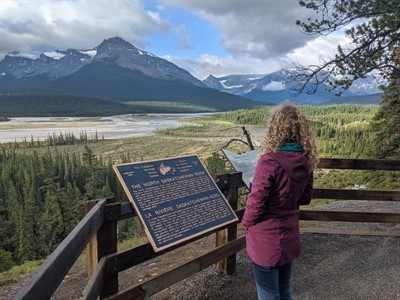What Are Heritage Rivers?
Canada’s +40 Heritage Rivers are recognized nationally for their outstanding natural, cultural, and recreational heritage. These rivers are an important part of Canada’s rich heritage, and shape who we are as a nation.
Once rivers are designated to the Canadian Heritage Rivers System, they become part of a network of waterways that are cared for by passionate river stewards. Governments, local communities, conservation authorities and local citizens come together with the overarching goal of celebrating, conserving and protecting designated rivers.
What are the benefits of CHRS Heritage Designation?
Being a part of the Canadian Heritage Rivers System means an opportunity to:
- foster cooperative river management that unites communities;
- celebrate and support the cultural connections of Indigenous Peoples with rivers;
- tell the stories of our nation, building a sense of identity and pride;
- stimulate adventure travel and sustainable tourism;
- help Canadians connect to history, nature and cultural traditions;
- promote stewardship and citizen engagement;
- engage new Canadians and youth in river education, conservation, and recreation;
- encourage the protection of water resources to improve public health, well-being, and quality of life.
The Canadian Heritage Rivers System informs, inspires and encourages Canadians to connect with the country’s river heritage and share in its safe-keeping. Our heritage rivers are integral to the health, well-being, and identity of Canada’s current and future generations.
Does a CHRS Designation Restrict Development?
No. The designation is commemorative and non-regulatory, meaning no new regulations or rules are brought about or implemented as a result. Existing legislation already in force continues, and the designation may serve as a vehicle for collaboration and conversation among governments, residents, and landowners.

CHRS Plaque at Saskatchewan Crossing, Banff NP
Is the NSR already Designated?
A 48.5 kilometer-long section of the headwaters of the North Saskatchewan River (NSR) within federal lands of Banff National Park was designated to the Canadian Heritage Rivers System in 1989, due to its outstanding natural and cultural heritage.
Plaque Text
"The North Saskatchewan River - The North Saskatchewan River rises in the Saskatchewan Glacier, an arm of the massive Columbia Icefield. The section of the river in Banff National Park flows swiftly past spectacular views of Rocky Mountain peaks. Native people hunted and camped along its shores for thousands of years before David Thompson, Joseph Howse, and later the Palliser Expedition explored the area. With its tributary, the Howse River, it was briefly a major route for nineteenth-century fur traders. Today, it provides a scenic recreational experience for skilled canoeists. For these outstanding features, the North Saskatchewan River in Banff National Park has been proclaimed a Canadian Heritage River."
What happens after Designation?
After a river is designated to the System, an annual report is prepared each year describing changes, improvements, and threats to the values for which the river was designated.
River-based events and stewardship actions are also listed in annual reports.
Every ten years, an in-depth review of the river’s values is undertaken and a monitoring report on the decade is prepared and tabled with the Board.

